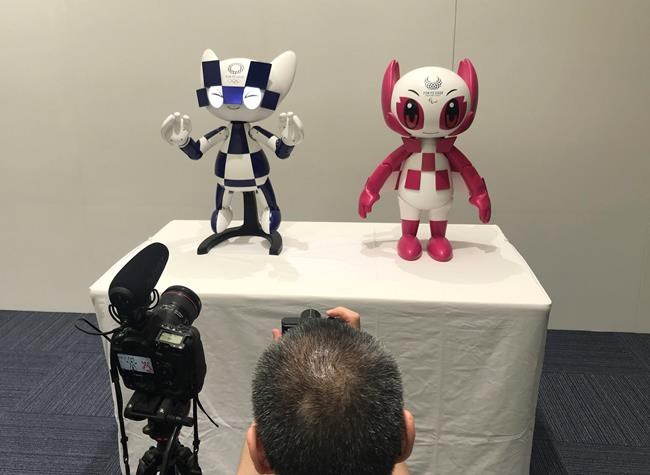Olympic robots offer ‘virtual’ attendance, help out on field
Advertisement
Read this article for free:
or
Already have an account? Log in here »
To continue reading, please subscribe:
Monthly Digital Subscription
$0 for the first 4 weeks*
- Enjoy unlimited reading on winnipegfreepress.com
- Read the E-Edition, our digital replica newspaper
- Access News Break, our award-winning app
- Play interactive puzzles
*No charge for 4 weeks then price increases to the regular rate of $19.00 plus GST every four weeks. Offer available to new and qualified returning subscribers only. Cancel any time.
Monthly Digital Subscription
$4.75/week*
- Enjoy unlimited reading on winnipegfreepress.com
- Read the E-Edition, our digital replica newspaper
- Access News Break, our award-winning app
- Play interactive puzzles
*Billed as $19 plus GST every four weeks. Cancel any time.
To continue reading, please subscribe:
Add Free Press access to your Brandon Sun subscription for only an additional
$1 for the first 4 weeks*
*Your next subscription payment will increase by $1.00 and you will be charged $16.99 plus GST for four weeks. After four weeks, your payment will increase to $23.99 plus GST every four weeks.
Read unlimited articles for free today:
or
Already have an account? Log in here »
Hey there, time traveller!
This article was published 21/07/2019 (2335 days ago), so information in it may no longer be current.
TOKYO – A cart-like robot scuttles across the field to bring back javelins and discuses. A towering screen-on-wheels is designed for “virtual” attendance. The cute ones are, naturally, the likeness of the Olympic and Paralympic mascots.
Japanese automaker Toyota Motor Corp., a major Olympic sponsor, is readying various robots for next year’s Tokyo Olympics. The robots were shown to reporters for release Monday.
The mascot robots have moving limbs and its eyes change to the image of stars and hearts. It cannot speak at all or walk very well. But the engineer in charge, Tomohisa Moridaira, suggested various possibilities, such as getting the robot to hold the Olympic torch using magnets.

The T-TR1, developed by Toyota’s robotics institute in the U.S., highlights “virtual mobility,” taking the automaker’s usual business of transportation to another dimension. It’s a moving human-size display designed to represent people who can’t be there.
Think a faraway grandma at a child’s birthday party or a legendary athlete not able to attend but “virtually” taking part in Olympic festivities.
Like all the world’s major automakers, Toyota uses robotics in production plants. But it has also designed human-like robots, including those that play musical instruments.
The Cue 3, which computes a three-dimensional image with sensors and adjusts motors for the right angle and propulsion to accurately throw basketballs, recently got listed in the Guinness World Records for making 2020 free throws without missing, a record for a robot and an homage to the Tokyo Olympics.
An earlier Toyota robot that glides around like R2-D2 is devoted to picking things up, to help the sick and elderly.
The latest “field support robot,” which looks like a cart, will also be picking things up: the javelin, discus or hammer on the Olympic field.
Its intelligence helps it avoid obstacles as well as repetitive routes to minimize wear and tear on the grass.

The catch is: It can’t go find the objects or pick them up on its own. A person has to run in front of it. Once the object is loaded, by the human, the robot will return to its original position.
___
Follow Yuri Kageyama on Twitter https://twitter.com/yurikageyama
On Instagram https://www.instagram.com/yurikageyama/?hl=en









